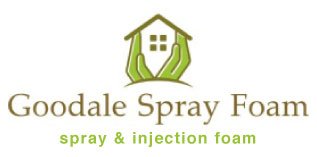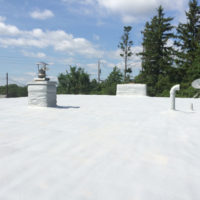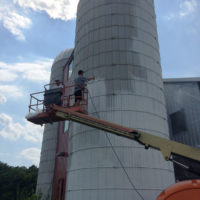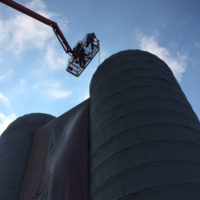Roofing Foam
Installing Sprayed Polyurethane Foam (SPF) roofing system on a new building, or retrofitting your older roof with an SPF roof can save you money in a lot of different ways. Most of the causes of additional roofing expenses don’t exist when you have a foam roof system.
 Foam Roofs have no seams to split or pull apart and allow water to enter. Foam is ideal for saw tooth or other irregular roof shapes that are difficult or impractical for old fashioned low-tech roofing materials.
Foam Roofs have no seams to split or pull apart and allow water to enter. Foam is ideal for saw tooth or other irregular roof shapes that are difficult or impractical for old fashioned low-tech roofing materials.- Sprayed Polyurethane Foam is also the best insulator on the market. Very little maintenance or repair is ever needed, and with proper care, it is the last roof you will ever need to buy.
- Density of SPF is important when it comes to strength and Thermal Resistance. Higher density means increased strength and higher R-value.
- Three pound density foam has a compressive strength of about 50 psi and an R-value of 7.14 installed and 6.86 aged (these numbers may vary slightly depending on the foam manufacturer.
- Sprayed Polyurethane Foam is perfect for many different waterproofing applications. Because it is composed of billions of closed cells, the foam acts as an air barrier, preventing moisture infiltration into the building.
- This ability minimizes dew point problems, which if unchecked lead to water condensation inside of the structure. Moisture infiltration into the building envelope is the number one cause of building deterioration.
- Even when the top coat of a foam roofing system is damaged, the underlying foam will keep the roof from leaking. The Superdome in New Orleans was damaged once in a severe hailstorm. Thousands of hairline cracks appeared in the top coat, but no leaks ever occurred, even though it wasn’t repaired for over a decade!
- If a penetration does occur all the way from the foam layers, the water infiltration will be isolated only to the area where the membrane has been penetrated. Small penetrations in foam roofing systems can be repaired easily with an elastomeric caulk, reinstating the integrity of the system.
- Water ponding is quite often a problem with conventional roofing systems. When applying the polyurethane foam in reroofing situations, it is very easy to build up areas of greater thickness while spraying so that water will drain properly. This also eliminates the problem of the additional weight load associated with water accumulation.









